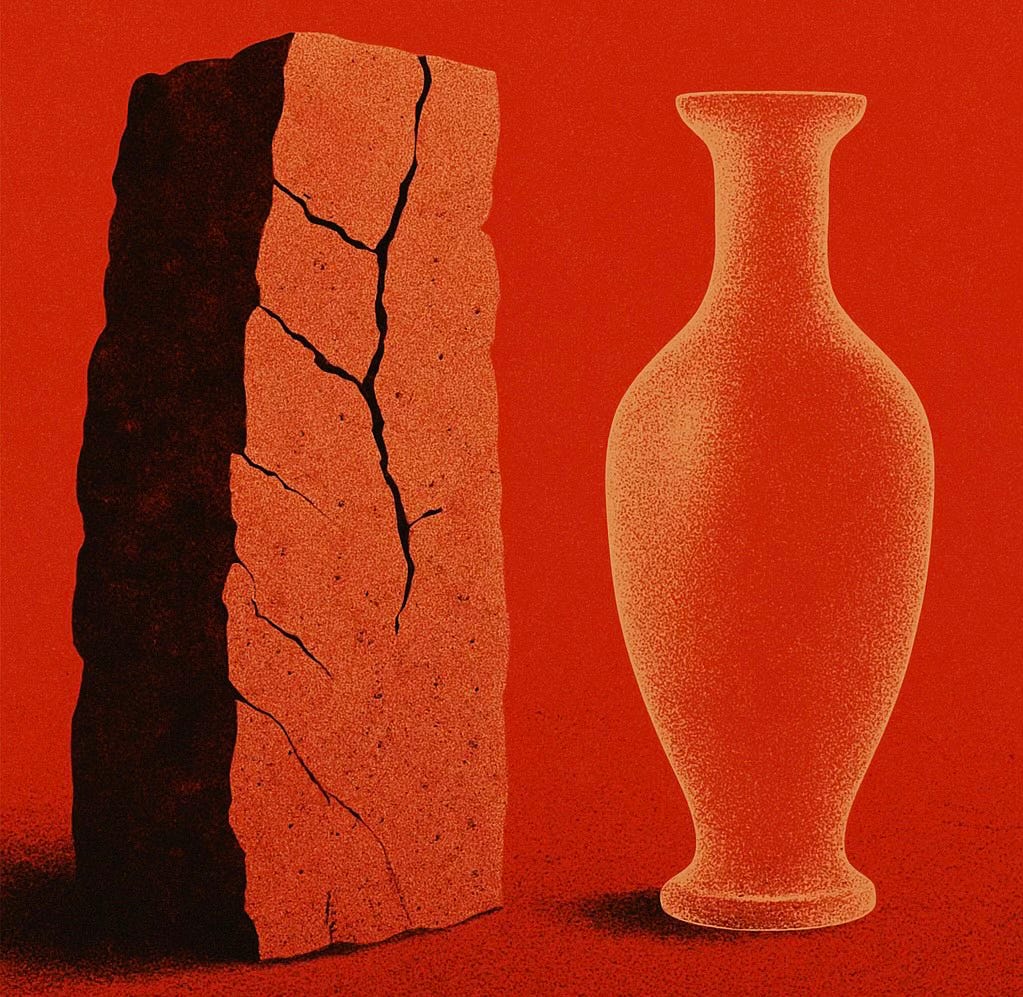There is an often-overlooked paradox in human relationships, careers, and even within our emotional architecture: what we treat as fragile endures, while what we believe is solid crumbles. This isn’t mere philosophical musing; it reflects a profound psychological and behavioral truth. Fragility, when acknowledged, invites vigilance, care, and continuous effort. Solidity, when presumed, breeds neglect, overconfidence, and ultimately, disintegration. Whether in love, professional life, or friendships, our assumptions about how “solid” things are shape the energy we put into preserving them — and that alone makes the difference between sustainability and collapse.
In a couple’s life, when one or both partners perceive the relationship as inherently fragile — not doomed, but requiring constant nurturing — that very perception becomes the engine of its longevity. The partner who sees love as something that can be easily hurt or lost pays close attention to small cues, invests emotionally in the well-being of the other, and remains actively engaged in keeping the emotional bond alive. This can take the form of subtle gestures: a bouquet of red roses delivered on a random weekday, a reassuring touch when words are hard to find, or a last-minute dinner to lift the other's spirits after a stressful day. None of these actions are grandiose; they’re daily repairs of an invisible thread, but that thread grows stronger with each act.
Contrast this with the illusion of solidity. When someone assumes their relationship is unbreakable — perhaps because of years of shared history, vows exchanged, or children raised — they subconsciously downgrade the urgency to maintain it. A once-attentive partner begins to postpone gestures of affection. Conversations become mechanical. The idea is, “We’re solid, we’ll be fine.” But the problem is precisely that assumption. Believing the structure is self-sustaining, one stops reinforcing it. Slowly, cracks appear — not through explosive conflict but through neglect. The relationship becomes fragile not because it was weak from the start, but because it was treated as if it didn’t need care.
The same logic applies in the professional realm. A young entrepreneur launching a small business, fully aware of the venture's fragility, often becomes the first to arrive, the last to leave, doing everything from financial planning to customer service. His sense of fragility drives him to work harder than employees, to sweat over every detail, to build resilience into the system from the ground up. The perception that the business could fail at any time keeps the pressure alive — but it's precisely that pressure that leads to progress, innovation, and ultimately, growth. Fragility becomes the very condition of strength.
By contrast, imagine an executive at the helm of a large, stable corporation who believes his position is secure — perhaps due to seniority, prestige, or past success. He begins to delegate excessively, disengage from operational details, and spends more time maintaining the image of leadership than the substance of it. His days are filled with ceremonial meetings, confident forecasts, and press interviews. But beneath this assumed solidity, dormant risks accumulate. One unanticipated market disruption or internal scandal can bring down the edifice, not because the system was inherently weak, but because its fragility was ignored in favor of an illusion.
There is also a dangerous psychological twist: certainty dulls perception. When we are convinced that something is strong, we stop scanning for threats. We become passive observers of our own lives. The subtle signs of tension in a marriage, dissatisfaction at work, or distance growing in friendships are easy to miss because our mental model doesn’t expect fragility. This cognitive bias — the assumption of continuity — blinds us to change until it’s too late. The couple that felt unshakable falls apart in a matter of months. The career that looked stable gets cut short. The friendship that once felt eternal vanishes with a single unresolved misunderstanding.
In contrast, those who treat every gain — emotional, professional, or social — as provisional, become more agile, more emotionally intelligent, more adaptive. Their mindset doesn’t feed anxiety; it fuels creativity and care. The friend who values a connection as delicate is the one who checks in without needing a reason. The team leader who sees team morale as a fragile resource is the one who holds spontaneous meetings to boost motivation. In both cases, perceived fragility creates a discipline of maintenance — a sustained investment of time and energy that leads to longevity.
Ironically, the more we accept fragility, the more solid the results become. The lover who continuously reinvents affection, the employee who never stops learning, the investor who constantly recalibrates risk — all are operating under the awareness that nothing is given, and therefore everything must be earned, again and again. And what is earned repeatedly does not disappear; it evolves, strengthens, and becomes truly enduring. Their efforts transform fragile beginnings into unshakable legacies — not because they were born solid, but because they were treated as breakable and kept under watch.
The real danger of perceived solidity is that it licenses complacency. It seduces us into a passive mode, where the beauty and balance of life are assumed to be self-preserving. But nothing is self-preserving in human experience. Relationships require continuous input. Careers demand reinvention. Personal growth needs discomfort. Any illusion that these are “safe” or “done” is the beginning of their decay. Complacency, in this way, is not laziness — it’s a strategic miscalculation, a misreading of the terms on which life is offered to us.
To thrive, one must honor the paradox: cherish everything as if it could vanish tomorrow. By doing so, we don’t fall into anxiety or paranoia — we fall into attentiveness, appreciation, and action. The path to sustainable relationships, careers, and selfhood is not the one paved with assumptions of strength, but the one carefully built with rituals of care, vigilance, and renewal. In fragility lies focus. In assumed solidity lies danger. One fuels effort and endurance; the other invites disappearance.

